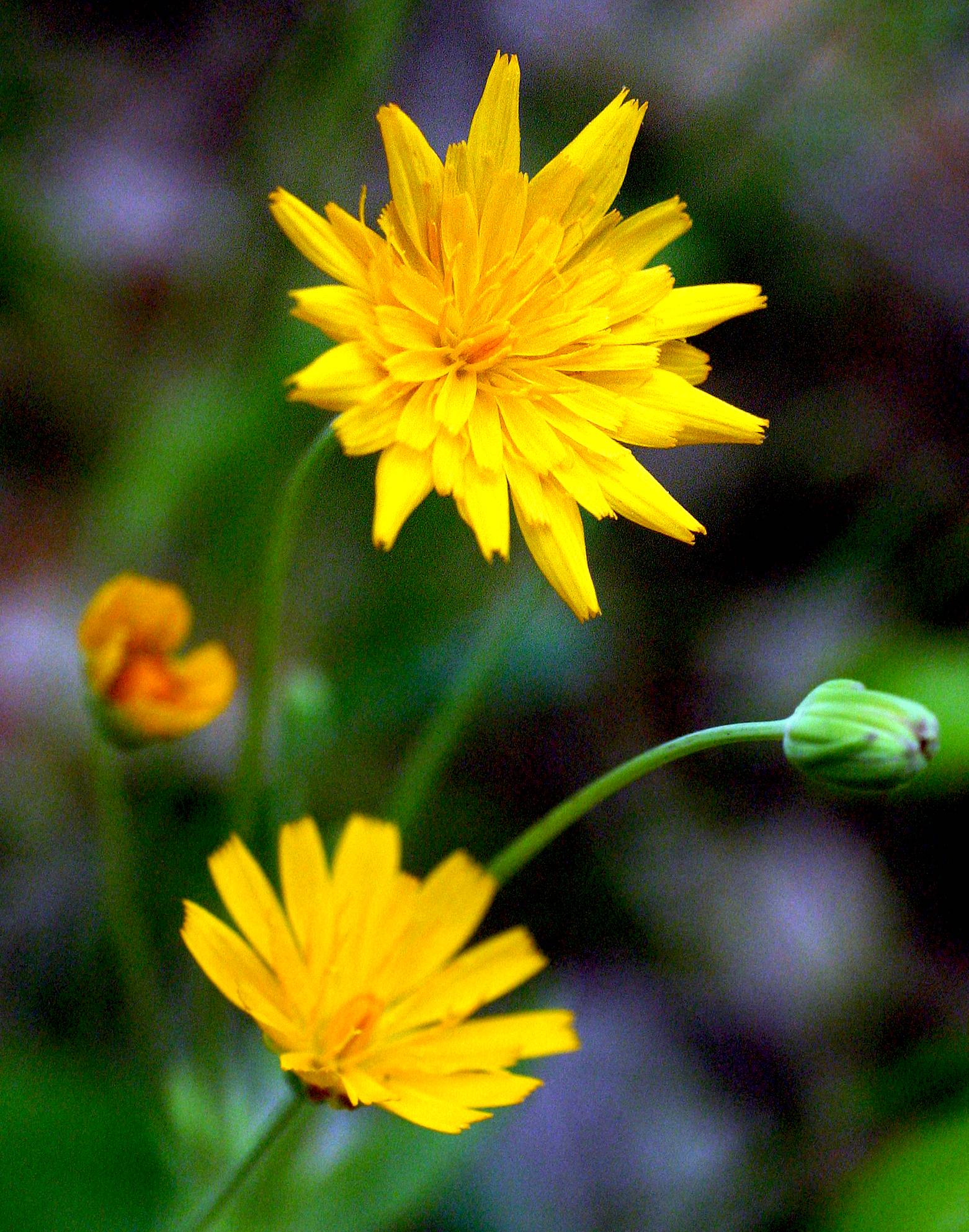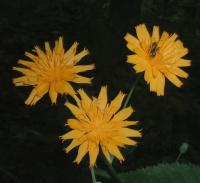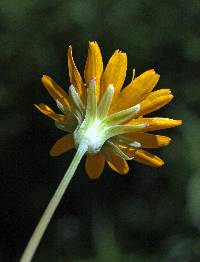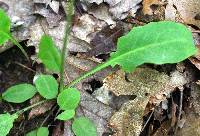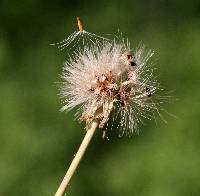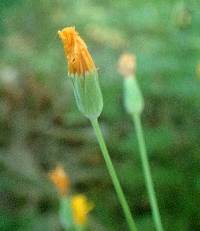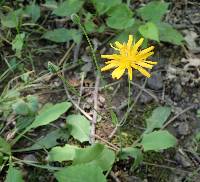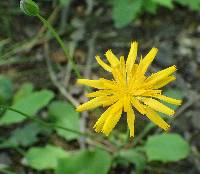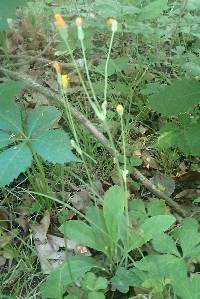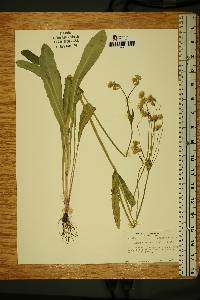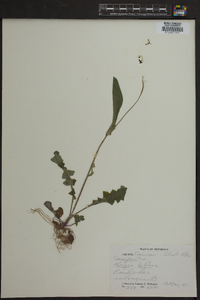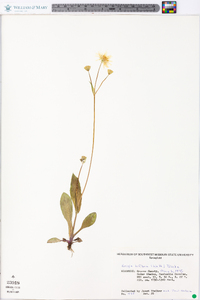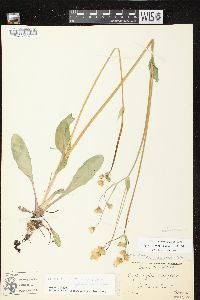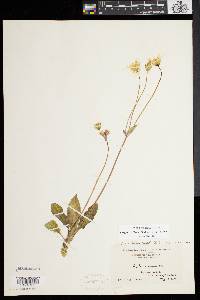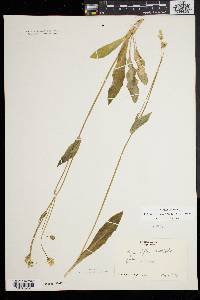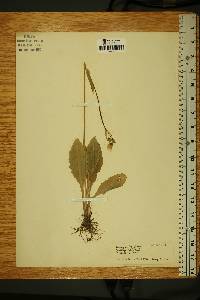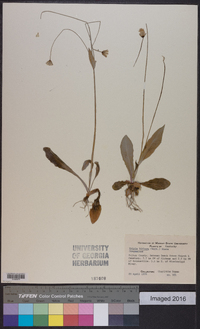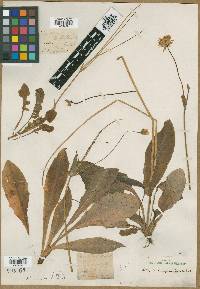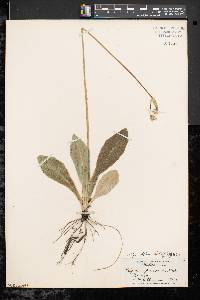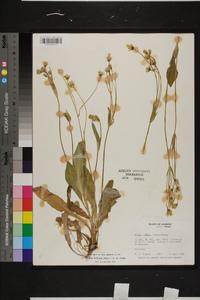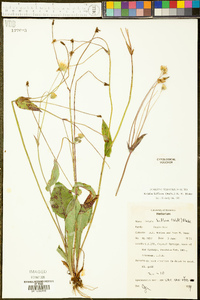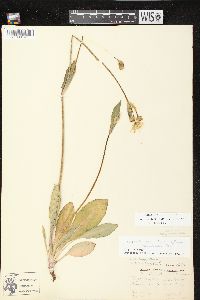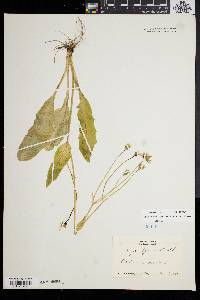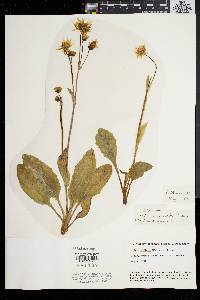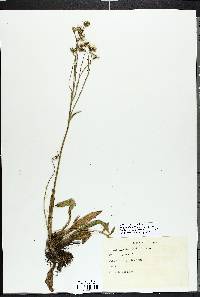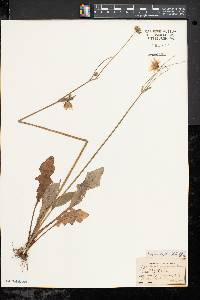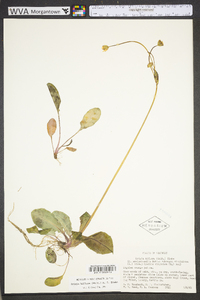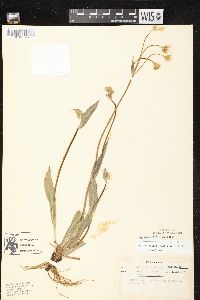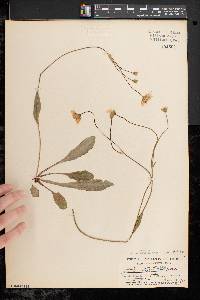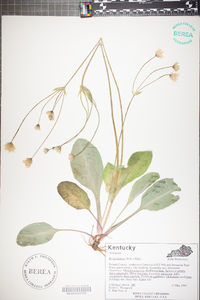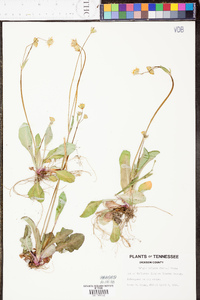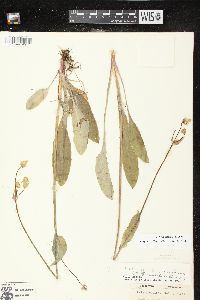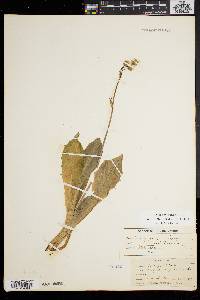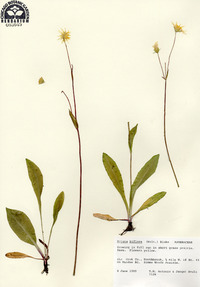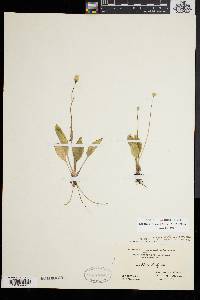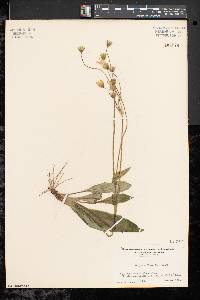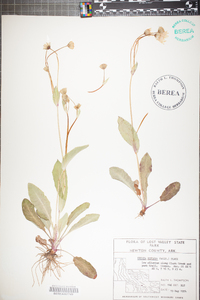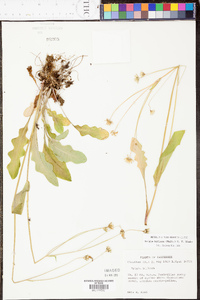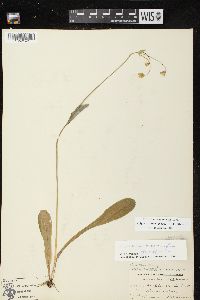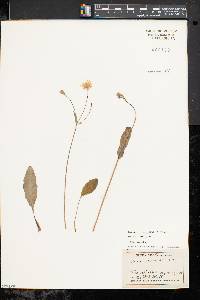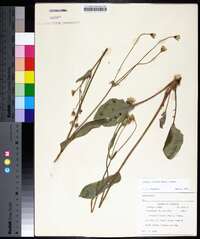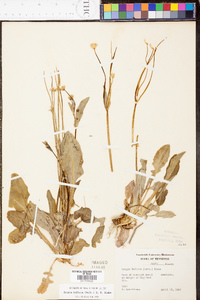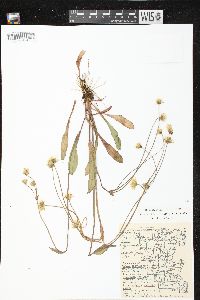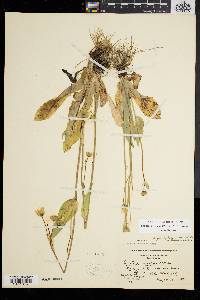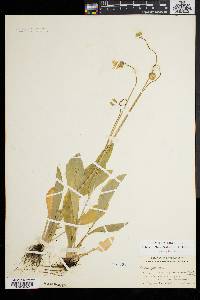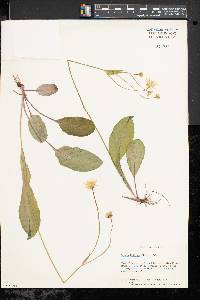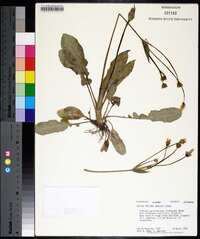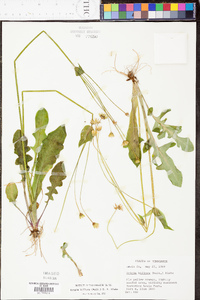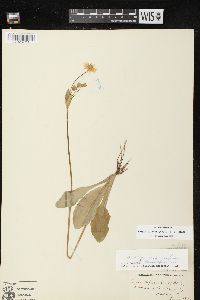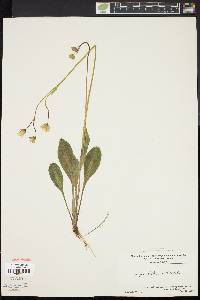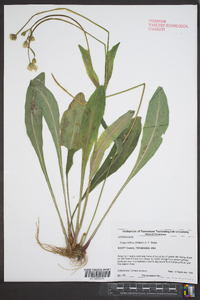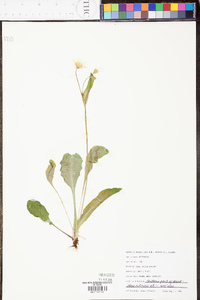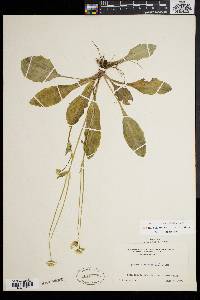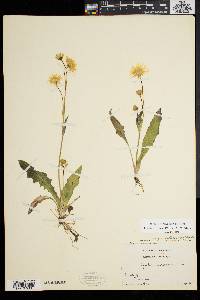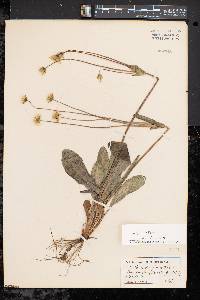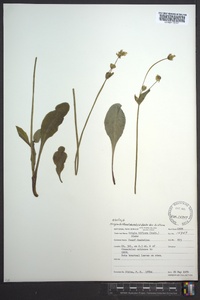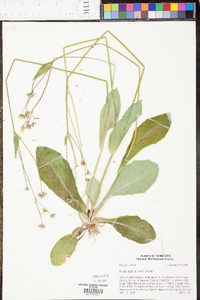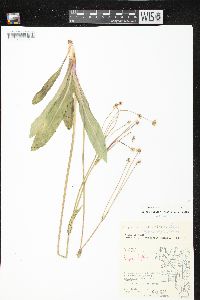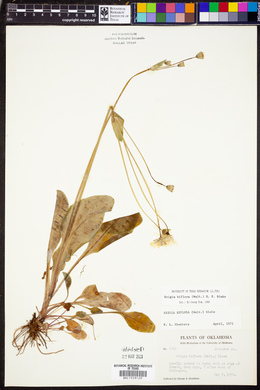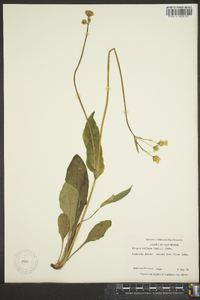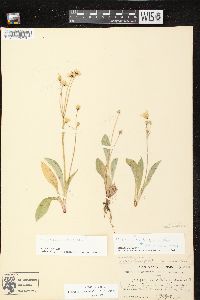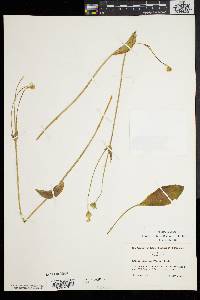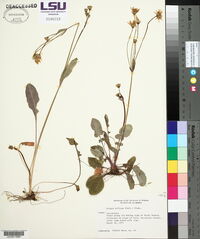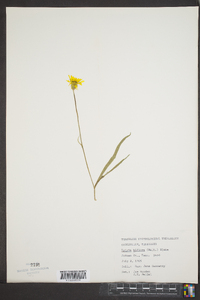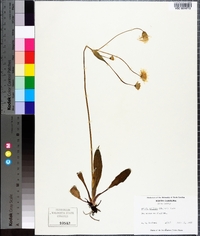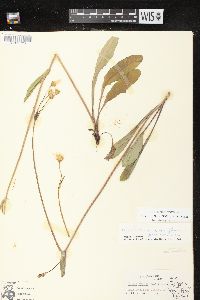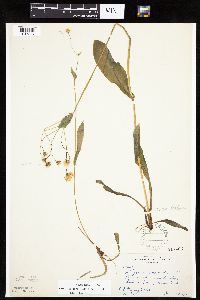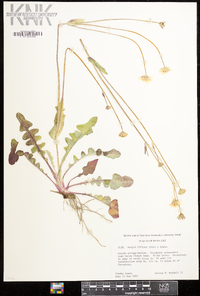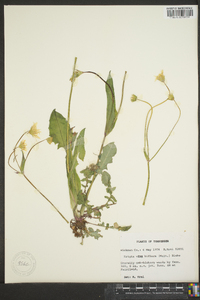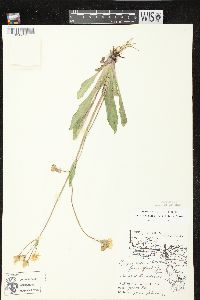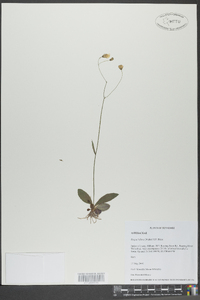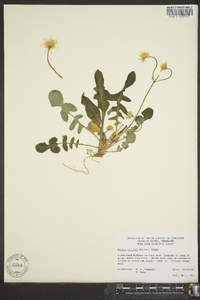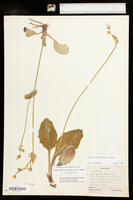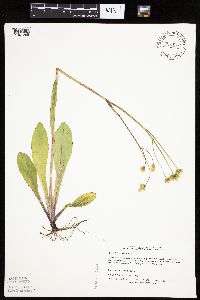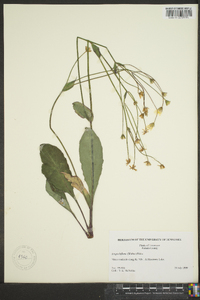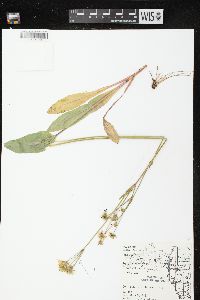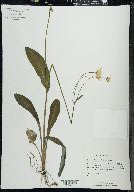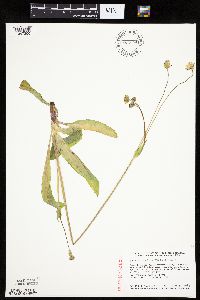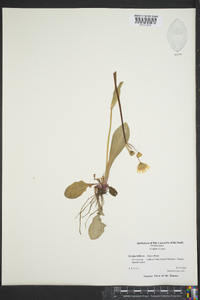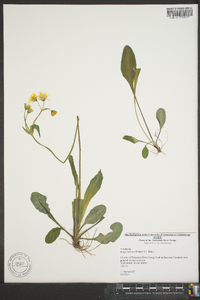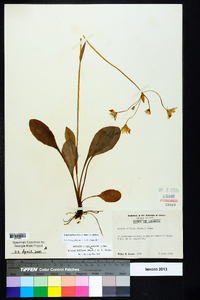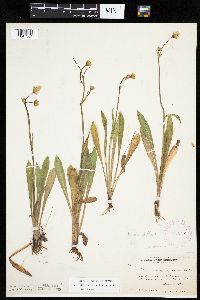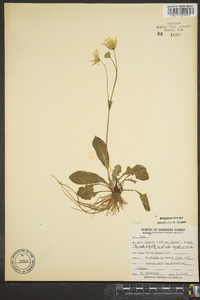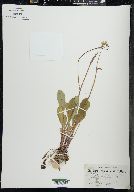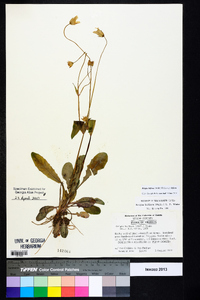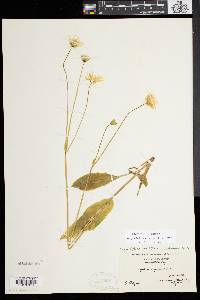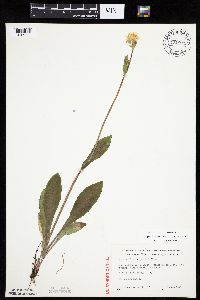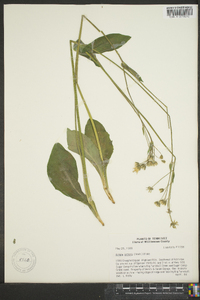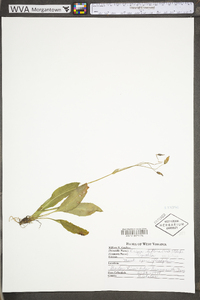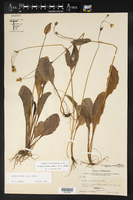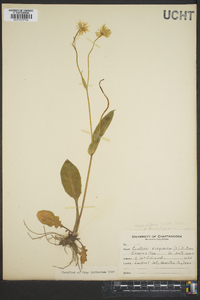
|
|
|
|
Family: Asteraceae
Two-Flower Dwarf-Dandelion, more...Two-Flower Cynthia, tall dwarfdandelion, twoflower dwarfdandelion
[Cynthia griffithii Nutt., moreKrigia biflora f. glandulifera Fernald] |
Perennials, 10-70 cm; caudices stout, fibrous-rooted (sometimes propagating by adventitious buds on roots). Stems 1-5+, erect, scapiform, eglandular or glandular-villous distally. Leaves mostly basal (rosettes), some cauline (proximal); petioles ± winged; blades oblance-olate to obovate or spatulate, 5-25 cm, margins entire or remotely dentate to pinnately lobed, lobes narrow to bluntly triangular or rounded, apices acute to obtuse or rounded, faces glabrous. eglandular (usually glaucous); cauline 1-4, sessile, lanceolate, bases sheathing or auriculate-clasping, usually entire, distalmost sometimes reduced, bractlike. Heads (2-)3-20+. Peduncles usually in groups of 2-6 from axils of single or paired distal cauline bracts. Involucres 7-11 mm. Phyllaries 8-18, reflexed in fruit. lanceolate, midveins obscure, apices acute, faces glabrous. Florets 25-60; corollas orange or yellow-orange, 15-25 mm. Cypselae reddish brown, columnar, 2-2.5 mm, 12-15-ribbed; pappi of ca. 10 outer scales 0.3-0.5 mm plus 20-40, barbellulate inner bristles 4.5-5.5 mm. 2n = 10, 20. Flowering Apr-Aug. Sandy, loam, or humus soils, shaded mixed mesophytic, beach-maple, oak-pine, and oak-hickory woods. often near streams, meadows, moist prairies, and Madrean woodlands; 10-2300 m; Man., Ont.; Ala., Ariz., Ark.. Colo., Conn., Del., Ga., Ill., Ind., Iowa, Kans., Ky., Md., Mass., Mich., Minn., Miss., Mo., N.J., N.Mex., N.Y., N.C., Ohio, Okla., Pa., R.I., Tenn., Va., W.Va., Wis. Krigia biflora is known from the Eastern deciduous forest biome, tallgrass prairie, Rocky Mountain forest, and Madrean woodlands. It appears to spread clonally by adventitious buds on the roots. It is related to the more leafy-stemmed, freely branching K. montana (K. J. Kim and B. L. Turner 1992); their habital differences are less clear where they are sympatric in the southern Appalachians. An alloploid hybrid between them has become established (see 3. K. montana).
General: Perennial, 10-70 cm tall; stems mostly 1-5, erect, slender, glabrous or glandular-hairy towards the inflorescence; plants with milky sap; fibrous-rooted. Leaves: Mostly basal (forming rosettes), oblanceolate, obovate, or spatulate, 5-25 cm long, up to 3 cm wide, cauline blades 1-4 (arising along the lower portion of the stem), lanceolate and much smaller than the basal ones, surfaces glabrous, glaucous, glands absent, margins entire or dentate to pinnately lobed, the lobes narrow, bluntly triangular, or rounded; basal blades wing-petioled, cauline blades sessile with sheathing or clasping bases. Flowers: Heads 10-85 or more, arranged in panicle-like to corymb- like arrays; peduncles usually densely silky pubescent; involucre hemispheric to campanulate, 8-10 mm long, 10-13 mm wide; phyllaries in 2 series, unequal, the outer series connate basally for 1/4-1/2 their length; ray flowers 10-16, 10-15 mm long, yellow; disk flowers 50-100 or more, 3.5-4 mm long, yellow; flowers June-September. Fruits: Achene, columnar, 2-2.5 mm long, 12-15 ribbed, reddish brown; pappus in 2 series, with 10 outer scales and 20-40 minutely barbed inner bristles. Ecology: Rocky open forests, thickets, meadows, riparian corridors, roadsides; 1800-2300 m (6000-7500 ft); Apache, Navajo, and Coconino counties; eastern Canada and eastern to southwestern U.S. Krigia biflora spreads by seed or clonally by adventitious buds on the Notes: na Editor: Springer et al. 2008 Fibrous-rooted perennial 2-8 dm from a short caudex, glabrous except generally under the heads, somewhat glaucous; basal lvs oblanceolate to broadly elliptic, mostly 4-25 cm (petiole included) נ1-5 cm, entire or toothed, or sometimes pinnatifid below but with a large, broad terminal segment; cauline lvs few, sessile and clasping, often much reduced, the uppermost often subopposite and with several long peduncles in their common axil; heads several; invol 7-14 mm, much surpassed by the orange fls; bracts 9-18, narrow, reflexed in age; pappus of 20-35 very fragile, unequal bristles and ca 10 inconspicuous hyaline scales less than 0.5 mm; 2n=10. Woods, roadsides, and fields; Mass. to Ga., w. to Man., Colo., and Ariz. May-Oct. (K. amplexicaulis) Gleason, Henry A. & Cronquist, Arthur J. 1991. Manual of vascular plants of northeastern United States and adjacent Canada. lxxv + 910 pp. ©The New York Botanical Garden. All rights reserved. Used by permission. From Flora of Indiana (1940) by Charles C. Deam Frequent to common throughout the state. It has a wide range of habitats, growing in soils ranging from clay to sand, and from marshes to the crests of black and white oak ridges. It prefers open black and white oak wooded slopes, open wooded dunes, interdunal flats, and moist, sandy prairies. I have 52 specimens from Indiana and all of them have the peduncles and involucres perfectly glabrous except 6 specimens which are more or less densely glandular-pubescent on the peduncles below the flower and at the base of the involucre. This glandular form is one of the varieties which was named by Farwell (Amer. Midland Nat. 12: 76. 193!0) and which apparently has no taxonomic significance. …… Indiana Coefficient of Conservatism: C = 5 Wetland Indicator Status: FACU |
|
|
|
This project was made possible in part by the Institute of Museum and Library Services [MG-70-19-0057-19].
Powered by Symbiota

